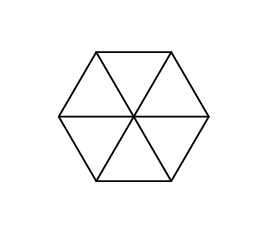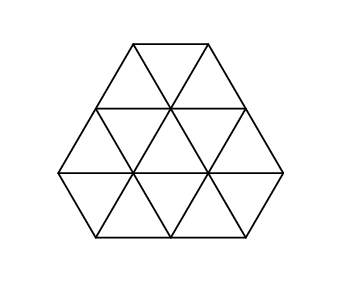Gerald got a very curious hexagon for his birthday. The boy found out that all the angles of the hexagon are equal to
 . Then he measured the length of its sides, and found that each of them is equal to an integer number of centimeters.
There the properties of the hexagon ended and Gerald decided to draw on it.
. Then he measured the length of its sides, and found that each of them is equal to an integer number of centimeters.
There the properties of the hexagon ended and Gerald decided to draw on it.
He painted a few lines, parallel to the sides of the hexagon. The lines split the hexagon into regular triangles with sides of 1 centimeter. Now Gerald wonders how many triangles he has got. But there were so many of them that Gerald lost the track of his counting. Help the boy count the triangles.
The first and the single line of the input contains 6 space-separated integers a1, a2, a3, a4, a5 and a6 (1 ≤ ai ≤ 1000) — the lengths of the sides of the hexagons in centimeters in the clockwise order. It is guaranteed that the hexagon with the indicated properties and the exactly such sides exists.
Print a single integer — the number of triangles with the sides of one 1 centimeter, into which the hexagon is split.
1 1 1 1 1 1
6
1 2 1 2 1 2
13
This is what Gerald's hexagon looks like in the first sample:

And that's what it looks like in the second sample:

题目链接:http://codeforces.com/contest/560/problem/C
题目大意:已知六边形的六条边长。求由多少个单位三等边角形拼成。边长按顺时针顺序给出,以单位三角形边长为单位。
解题思路:把六边形补成大等边三角形。由于边长为n的大三角形由n*n个小单位角形拼成,更easy计算。大三角形减去三个角变成六边形,减去的三个小三角形的这边长正好等于六边形中相应的的三条边长。因此,设大三角边长为s,三个小三角形边长分别为a,b,c,那个单位三角形个数为 s*s-(a*a+b*b+c*c).而 s 正好等于六边形相邻三条边之和,a。b,c 则各自等于六边形相隔的三条边,因此非常easy得出答案,能够绘图加深了解。
代码例如以下:
#include <cstdio>
#include <cstring>
int a[8];
int main()
{
int s,ans;
for(int i=0;i<6;i++)
scanf("%d",&a[i]);
s=a[0]+a[1]+a[2];
ans=s*s-(a[0]*a[0]+a[2]*a[2]+a[4]*a[4]);
printf("%d
",ans);
return 0;
}